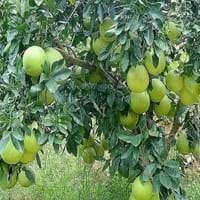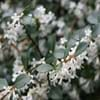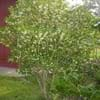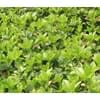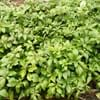What is
Life Span
Perennial
Perennial
Type
Broadleaf Evergreen
Fruit
Origin
China, Japan
Southeastern Asia, Polynesia
Types
Heavenly Bamboo, Nandina 'Colerno'
Dwarf Nandina 'Compacta'
Dwarf Nandina 'Filamentosa'
Heavenly Bamboo, Nandina 'Harbor Belle'
Heavenly Bamboo, Nandina 'Moon Bay'
African Shaddock,Chandler Pomelo,Kao Phuang Pomelo,MeloGold Pomelo-Grapefruit,Minneloa Tangelo
Number of Varieties
30
99+
Not Available
Habitat
low mountains, Mountain tops, Mountains, Valley
Clay soil areas, Coastal Regions
USDA Hardiness Zone
6-11
10-11
AHS Heat Zone
Not Available
12-10
Sunset Zone
21,22
H1, H2, 8, 9, 12, 13, 14, 15, 16, 17, 18, 19, 20, 21, 22, 23, 24
Habit
Clump-Forming
Oval or Rounded
Information
Plant Size
Minimum Height
30.00 cm
99+
610.00 cm
99+
Minimum Width
60.00 cm
99+
610.00 cm
34
Plant Color
Flower Color
Not Available
White
Flower Color Modifier
Bicolor
Bicolor
Fruit Color
Not Available
White, Yellow, Light Pink
Leaf Color in Spring
Green, Purple, Copper
Green, Dark Green
Leaf Color in Summer
Green, Purple
Green, Dark Green
Leaf Color in Fall
Green, Purple
Green, Dark Green
Leaf Color in Winter
Red, Green, Purple
Light Green
Shape
Leaf Shape
Acuminate
Compound
Thorns
No
Yes
Season
Plant Season
Spring, Summer, Fall, Winter
Spring, Summer, Fall, Winter
Growing Conditions
Sunlight
Full Sun, Partial Sun, Partial shade, Full Shade
Full Sun, Partial Sun
Growth Rate
Medium
Fast
Type of Soil
Loam, Sand
Loam, Sand
The pH of Soil
Acidic, Neutral, Alkaline
Acidic, Neutral
Soil Drainage
Well drained
Well drained
Bloom Time
Not Available
Indeterminate
Repeat Bloomer
No
Yes
Tolerances
Drought
Drought
Care
Where to Plant?
Ground
Ground
How to Plant?
Seedlings
Grafting, Seedlings
Plant Maintenance
Medium
Medium
Watering Plants
Watering Requirements
Do not water frequently, Needs less watering
Needs watering once a week, Requires consistently moist soil
In Summer
Lots of watering
Lots of watering
In Spring
Moderate
Moderate
In Winter
Average Water
Average Water
Soil
Soil pH
Acidic, Neutral, Alkaline
Acidic, Neutral
Soil Type
Loam, Sand
Loam, Sand
Soil Drainage Capacity
Well drained
Well drained
Sun Exposure
Full Sun, Partial Sun, Partial shade, Full Shade
Full Sun, Partial Sun
Pruning
Remove damaged leaves, Remove dead branches, Remove dead leaves
Remove damaged leaves, Remove dead branches, Remove dead leaves
Fertilizers
All-Purpose Liquid Fertilizer
All-Purpose Liquid Fertilizer
Pests and Diseases
Red blotch
Red blotch
Plant Tolerance
Drought
Drought
Facts
Flowers
Not Available
Showy
Flower Petal Number
Not Available
Single
Fruits
Showy Fruit
No
Yes
Edible Fruit
No
Yes
Fragrance
Fragrant Flower
No
Yes
Fragrant Fruit
No
Yes
Fragrant Leaf
No
No
Fragrant Bark/Stem
No
Yes
Showy Foliage
Yes
Yes
Showy Bark
No
No
Foliage Texture
Fine
Medium
Foliage Sheen
Glossy
Glossy
Evergreen
No
No
Invasive
No
No
Self-Sowing
No
Yes
Attracts
Mealybugs, Whiteflies
Birds, Butterflies
Allergy
Not Available
Dermatitis, Skin irritation
Benefits
Uses
Aesthetic Uses
Bonsai, Borders
Not Available
Beauty Benefits
Not Available
Brightens the skin complexion, Skin Problems
Edible Uses
No
Yes
Environmental Uses
Air purification
Air purification, Food for birds, Food for insects
Plant Benefits
Medicinal Uses
Antirheumatic, Antitussive, Astringent
Acne, Detoxification, Digestion problems, epilepsy, Kidney Stones, Nutrients, Obesity
Part of Plant Used
Fruits, Leaves
Flowers, Fruits, Leaves, Seeds
Other Uses
Used for making informal hedge
febrifuge, Tea-like beverage can be brewed
Used As Indoor Plant
No
Insignificant
Used As Outdoor Plant
Yes
Yes
Garden Design
Container, Edging, Foundation, Groundcover, Hedges, Mixed Border, Topiary, Bonsai, Espalier
Container, Edible, Fruit / Fruit Tree, Shade Trees, Tropical
Scientific Name
Botanical Name
NANDINA domestica 'Nana Purpurea'
CITRUS maxima 'Hirado'
Common Name
heavenly bamboo
sacred bamboo
nandina
pomelo, pomello, pummelo, pommelo, pamplemousse, jabong, shaddick,or shaddock
In Hindi
Dwarf Nandina
चकोतरा
In German
Dwarf Nandina
Pampelmuse
In French
Nandina Dwarf
Citrus maxima
In Spanish
Nandina enana
Citrus maxima
In Greek
Dwarf Nandina
Not available
In Portuguese
Nandina do anão
Pomelo
In Polish
Dwarf Nandina
Pomarańcza olbrzymia
In Latin
Dwarf Nandina
Citrus maxima
Classification
Kingdom
Plantae
Plantae
Phylum
Tracheophyta
Magnoliophyta
Class
Magnoliopsida
Magnoliopsida
Order
Ranunculales
Sapindales
Family
Berberidaceae
Rutaceae
Genus
Nandina
Citrus
Clade
Angiosperms, Eudicots
Angiosperms, Eudicots, Rosids
Tribe
Not Available
Citreae
Subfamily
Not Available
Aurantioideae
Number of Species
Not Available
Not Available
|
||
|
||
|

